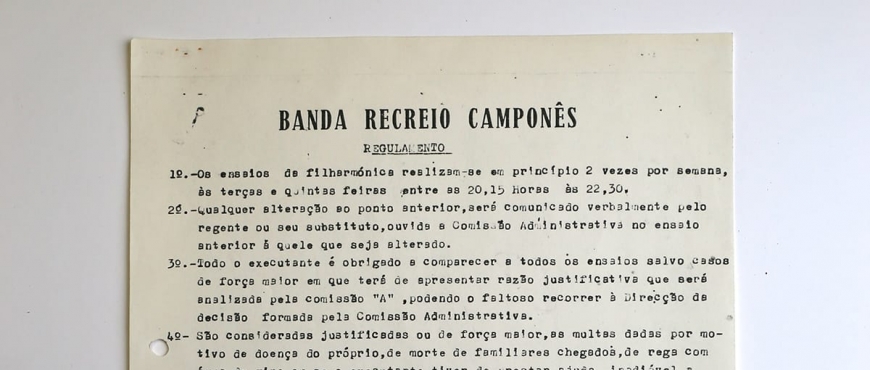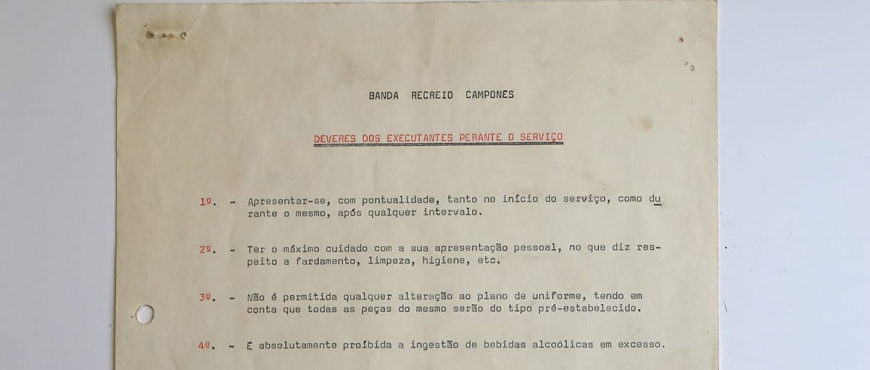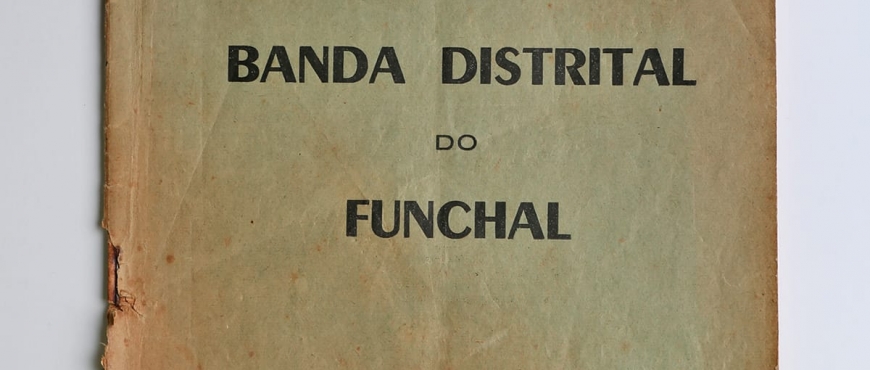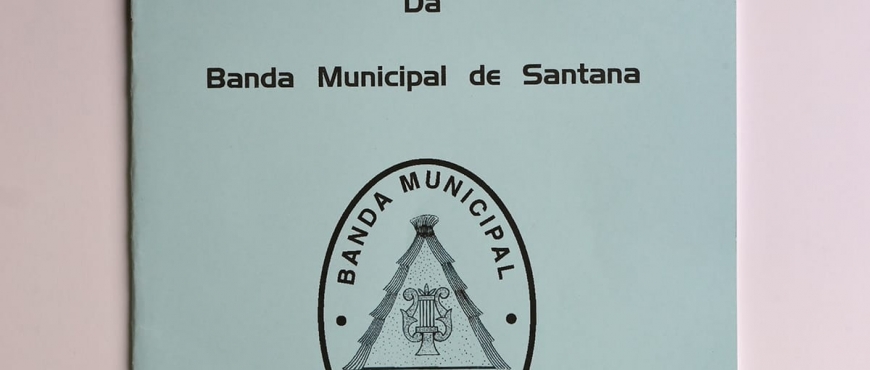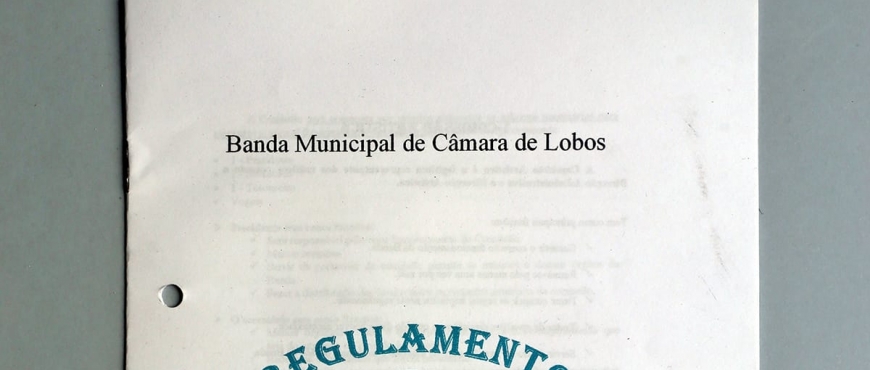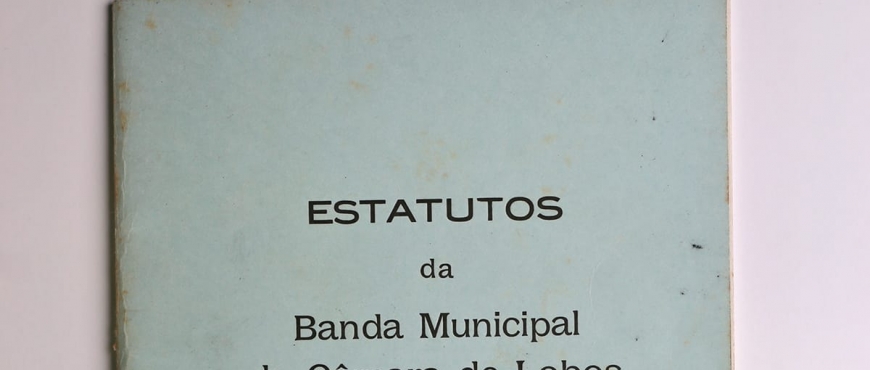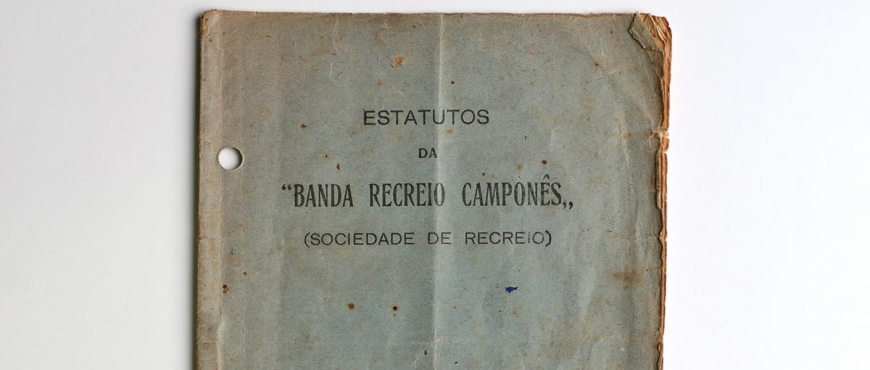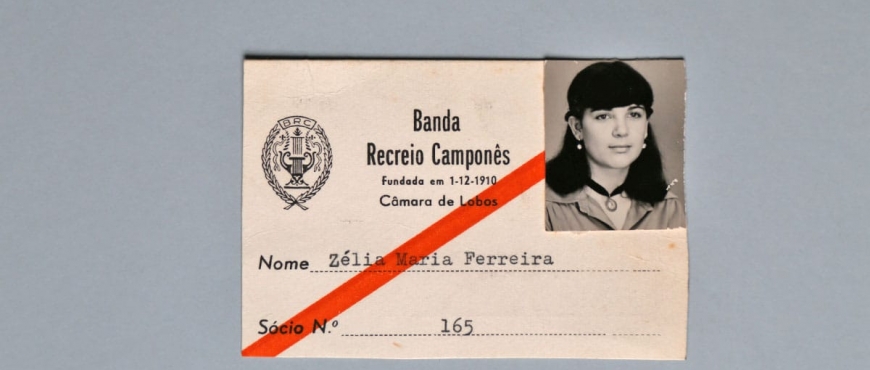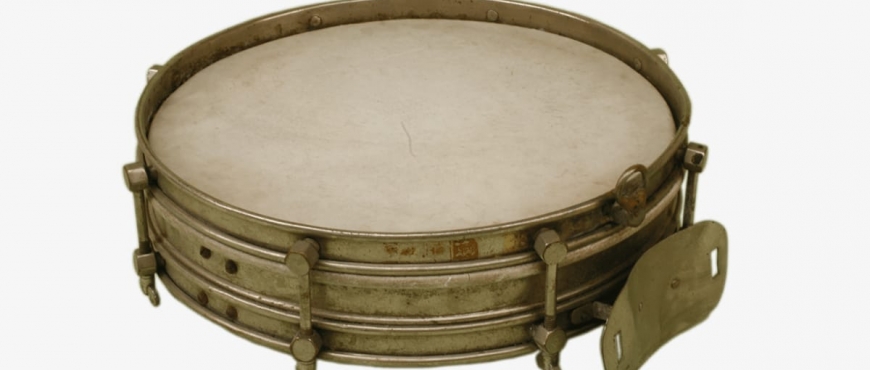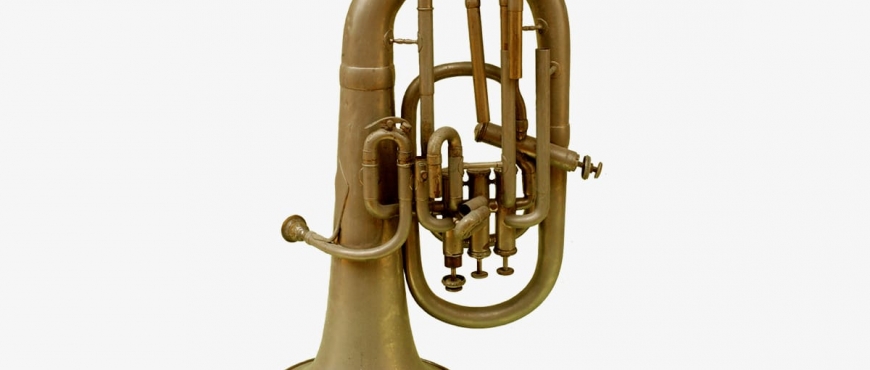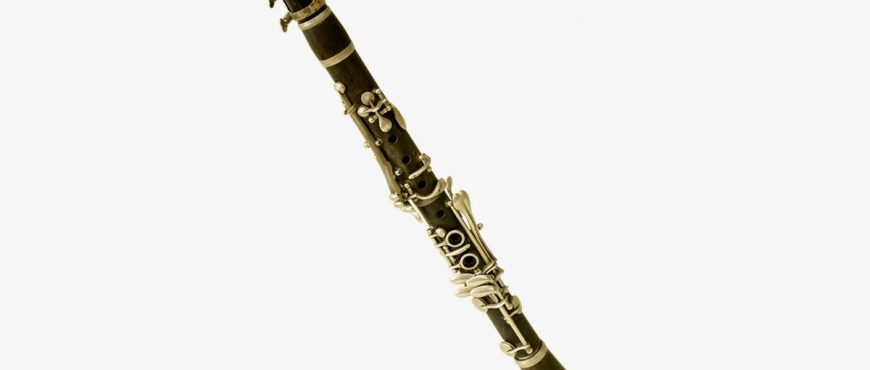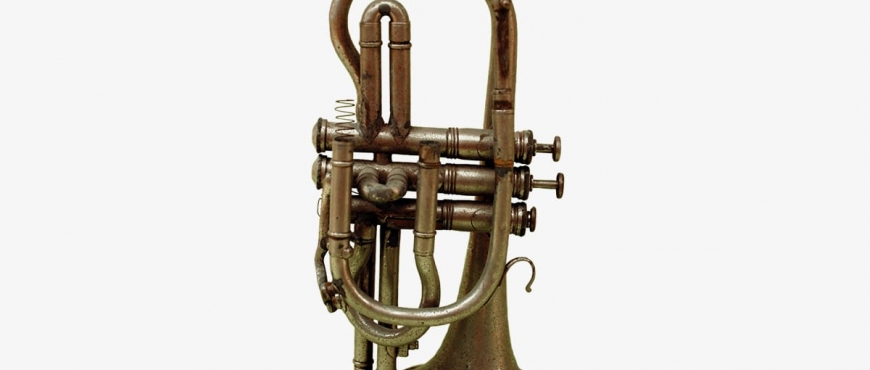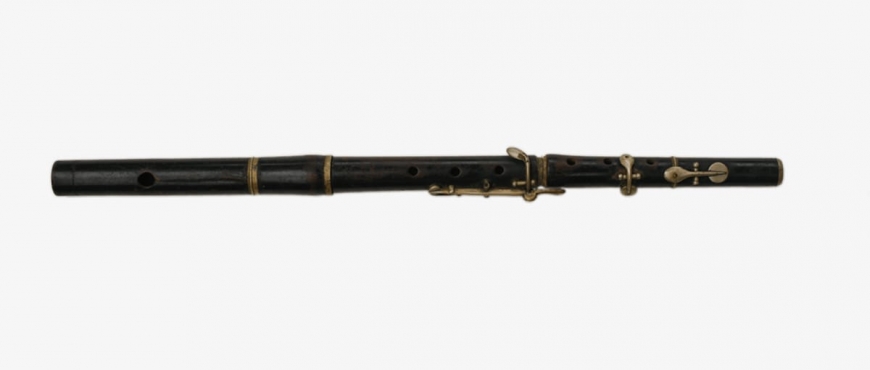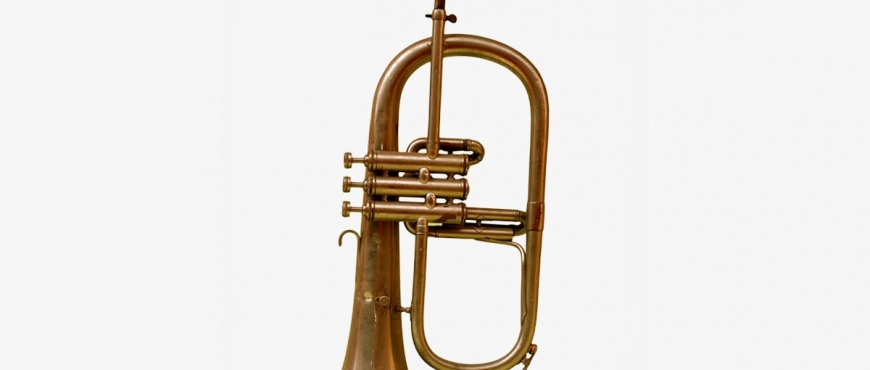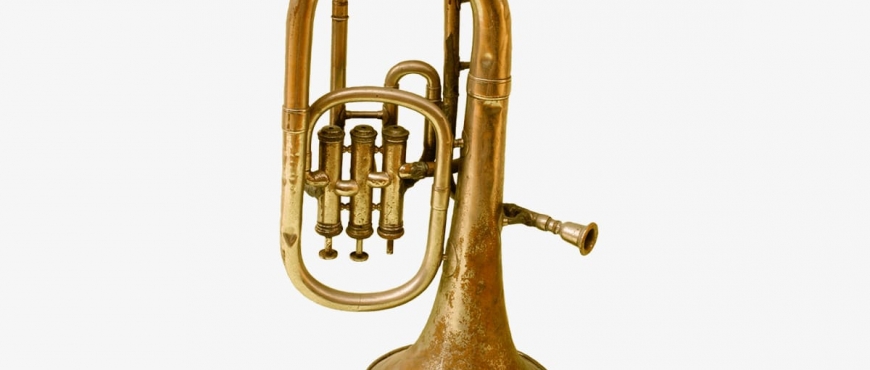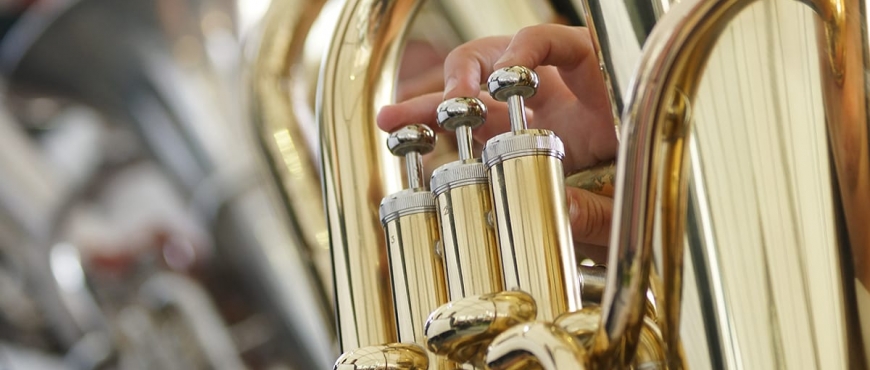Posted in Administrative FundStatutes
Statutes – Banda Distrital do Funchal
The Banda Distrial do Funchal has in its estates a book of statutes, of November 9, 1962 that we consider the oldest. One particularity of these statutes is they were typed and printed, usually the statutes were handwritten in the minutes books in some cases.
Posted in Administrative FundStatutes
Statutes – Banda Municipal de Câmara de Lobos
Statutes of the Banda Municipal de Câmara de Lobos.
Posted in Administrative FundStatutes
Statutes – Banda Recreio Camponês
Statutes of the Banda Recreio Camponês dated 1931.
Posted in Administrative FundMembers
Membership Form – Banda Recreio Camponês
Name: Zélia Maria Ferreira Member: 165
Posted in Instruments
Snare Drum
The instrument is composed of a cylindrical shaft of wood or metal covered at each end by a hair or synthetic membrane. The membranes are surrounded by hoops and secured by counter-bows. The tension is achieved by screwed screws or (occasionally) by tight ropes. The depth of the shaft varies according to the purpose of the instrument. Along the lower membrane are straps: gut strings, steel, cedar or nylon. The marks, 8 or more in number, give the membrane its characteristic timbre: when the upper membrane is percussed, the resonance is communicated to the lower membrane, which then vibrates against…
Posted in Instruments
Euphonium
It has four cylinders and four pistons respectively. The fourth piston is dissociated from the central piston box, serving as an aid to the lower notes, and is activated by the left hand. The nozzle is removable. Nozzles for mouthpiece Custódio Cardoso Pereira & Cª Portugal, Rua do Carmo, 13 – Lisbon, post. 1861 Recording in the bell: C C Pereira & Cª / R. Do Carmo, 13 / Lisboa Tuning: C System: 3 pistons + 1 piston (auxiliary)
Posted in Instruments
Clarinet in Eb
Clarinet in E-flat (used especially in the military bands, but also in the orchestras). Single vane wood blowing instrument, stop, and closed cylindrical tube (the first harmonic is a 12 ° from the fundamental). Its current form dates back to 1700. Today the instrument is divisible into four (or five) sections: bell, 1st part, 2nd part, barrel and mouthpiece (with pick); the system used comprises between 20 and 22 keys. Instrument divided into 5 sections (bell, body – 2 pieces, barrel and mouthpiece). It has 5 holes and 17 keys (2 open). Edge aerof Couesnon & C.ie France – Paris,…
Posted in Instruments
Cornet
Piston Aerosol of the metal family with tuning in contralto or soprano, developed in the late 20s of the 19th century. The three pistons are in most models positioned after the main tube about halfway along the length of the sound tubing. There is a more pronounced cone between the receiver of the nozzle and the pistons than in the modern trumpet. The shape of the modern bugle mouthpiece is not substantially different from that of the modern trumpet, but the hole is smaller and less conical. The bugle tuned in Sib in unison with the Sib trumpet is the…
Posted in Instruments
Piccolo
“Divided into 3 or 4 pieces, it is in the first, the upper one, which is naturally the mouthpiece and the cork which, actuated by a screw that connects it to the hat by a slight rotation, regulates the need for tuning. Of cane, wood, ivory or glass, rubber, white metal, silver and gold, the flute that reached seventeen keys, began to have none and is now eleven. The main improvements in the mechanics of this instrument are due to Quantz, Tromlitz, Grenzer, Schwedler and Bohm, who gave him more artistic possibilities.” Wooden instrument in cylindrical form, consisting of four…
Posted in Instruments
Flugelhorn
“Instrument of pistons in brass tuned in Sib with the same same texture of the cornet. Conical body, wide bell and the large format of its predecessor, the horn of keys. The nozzle has a deep, almost funnel-shaped bowl and a sliding tube serves the tuning adjustment. The sonority is round and soft, although rough as the Bugle when this instrument is played in loud sound “Instruments composed of three cylinders and three pistons topped with mother-of-pearl plates. It has a removable nozzle. Nozzle for mouthpiece Couesnon Paris Paris – France, post. 1931 Recording in to the bell: Couesnon Paris…
Posted in Instruments
Saxhorn
Instrument of the family of the saxhornes, traditionally designated in the band of Artists Funchalenses by “trumpet of Our Lady. It has a removable nozzle and 3 piston system. Nozzle for mouthpiece Custódio Cardoso Pereira & Cª Portugal, Rua do Carmo 13 – Lisbon, post. 1861 Recording in to the bell: C C Pereira & Cª / R. Do Carmo, 13 / Lisboa Owner: Banda Municipal do Funchal (Artistas Funchalenses) Tuning: Mi b System: 3 pistons
Posted in Instruments
Timpani
The timpani are the most important percussion instruments of the orchestra, mainly because they are able to produce notes and the definition of tunings, being able to take part in the harmony of a composition. They are precisely tuned, each one for a given note, according to the directions of the composers in the score, which may be altered as necessary during the course of a piece (usually by changing a key), by tightening or widening the tympanic membrane by means of screws or other mechanisms. Each drum is made up of a large cup bowl or resonance tank, usually…
Posted in Instruments
Trombone for Rotary Valves
A lip vibration aerophone of the cylindrical body metal family. The most common trombones are understood to correspond to the tenor and bass of the trumpet [soprano-alto]. In its most usual form, the trombone is characterized by a telescopic rod with which the player varies the length of the tube; hence the term “trombone of rods”. Although Heinrich Stölzel, a co-inventor of the piston, considered the application of his invention to the trombone, it was other Vienna-based builders who in the 1920s employed the double piston system to this instrument. Made of high, tenor and bass tessitures, piston trombones peaked…
Posted in Instruments
Tuba
Tools of the family of metals with pistons. The tubing (usually not pointed out in the chart, tubing) is generally rolled in an elliptical form and terminates, at one end, in a wide bell (usually pointed up) and in another in a nozzle in cup shape, wide depth. The instrument has as its fundamental D1 (or more severe) and is equipped with 3 to 6 (often 4, rarely 7) pistons to change the length of the pipe and, consequently, the fundamental. A group of related instruments, of various shapes and sizes, can be referred to as the Tuba family constituent,…




